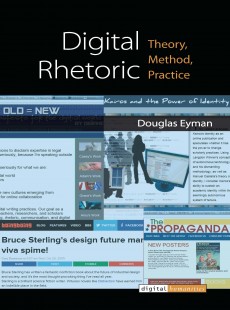
Digital Rhetoric
Theory, Method, Practice
Douglas Eyman
 Publisher: University of Michigan Press
Publisher: University of Michigan Press
Imprint: University of Michigan Press
Published: 01/2015
Pages: 176
Subject: Computers - Digital Media/General, Social Science - Media Studies, Language Arts & Disciplines - Rhetoric
Print ISBN: 9780472052684
eBook ISBN: 9780472900114
DESCRIPTION
Through examples and consideration of digital rhetoric theories, methods for both researching and making in digital rhetoric fields, and examples of digital rhetoric pedagogy, scholarship, and public performance, this book delivers a broad overview of digital rhetoric. In addition, Douglas Eyman provides historical context by investigating the histories and boundaries that arise from mapping this emerging field and by focusing on the theories that have been taken up and revised by digital rhetoric scholars and practitioners. Both traditional and new methods are examined for the tools they provide that can be used to both study digital rhetoric and to potentially make new forms that draw on digital rhetoric for their persuasive power.
REVIEWS
—Cynthia Haynes, Clemson University
